In my role as a technology coordinator this year, I have had the pleasure of working with teachers across grade levels and subjects. When I meet with teachers, a consistent request is to use technology to raise the bar for students. Our student population is top-notch, and teachers recognize the need to increase rigor and responsibility in an authentic way. I am giddy because of all the successes I have witnessed this year. This post only highlights one small example of many thrilling learning experiences.
Rigor. Responsibility. Authenticity.
With so much rigidity in education these days, several teachers made a decision that student-created videos would provide a much needed authentic experience. I expected teachers to use the videos as a culminating project at the end of units. However, throughout the course of the school year, they used video creation before learning (to build background knowledge), in the middle of units (as formative assessment), as well as for final projects. Another blog post is coming soon about integrating student-created videos effectively. For this post, I will focus on one main project.
More Learning, More Questions, Repeat
Let's follow a group of sixth grade students. At the beginning of the year, they used the green screen and video to create weather forecasts as a culminating project in science. It was pretty straightforward. Students used one or two backgrounds and recorded forecasts. Most of them stood in front of the green screen like typical meteorologists. After filming, students used basic editing skills in MovieMaker: simple video trimming, adding titles and captions, and creating scrolling credits. One or two groups added creative twists, and in the hallway after the video screening, I overheard students asking each other about how various effects were achieved either in filming or in editing.
Fast forward to a mid-year ELA project. That same group of students worked in groups to create summaries for sections of a novel. Then, they pieced all the movies into one large movie based on the book. As the technology coordinator, I worked with the team of teachers in a similar process as the forecasts. However, this experience was NOTHING like the first project. The teachers' plans were similar, and so were mine. The STUDENTS changed! We never thought to limit the students, because most of the time these same students generally try to do the bare minimum to get "the A" on the project. In this case, the top rating on the rubric turned into the basic guideline.
Each group wrote a script for a section of the book and rehearsed it. As students arrived on filming day, several of them were carrying things that were out of the ordinary for a normal school day. A bowl of fruit, a little wagon, suits, coat hangers, flags, cardboard creations, banana bunches, wigs, pillows, blankets, doctor's bags, and brief cases. When the first group came down to my room to film, I realized all of those strange items from the morning were props! The students even dressed in character. It was amazing how much preparation students did outside of school! Filming was an even crazier affair. Some groups planned for twelve or more background changes using the green screen effect. They even did creative photo editing to make the backgrounds fit the scenes more accurately! All of those background changes meant that the set had to be adjusted before each scene was shot. I actually felt like I had lost control at certain points in filming, and that was scary. One group created a clothes rack "in a department store" by tipping desks upside down and sideways; another knew exactly how the chairs needed to be arranged so they would look like a crib. I didn't always see their visions, but I decided to trust them. They were so passionate about the story telling, and the group "directors" knew exactly what was going on. At the end of the day, I had an iPad full of short clips that were somehow going to retell the story of Letters from Rifka. I watched a few of the clips, just to review what was accomplished in that whirlwind of a day. Again I was overtaken with fear. Those individual clips made no sense. I went and apologized to the teachers for not guiding students as much as I probably should have. They also seemed a little worried, but they decided to trust the students and allow them to see the project through to the editing phase. I transferred all the files to the network, and in one "lab" period, most of the groups had their sections pieced together. Trimming video clips seemed as effortless for them as cutting a piece of paper, and those amazing kids needed very little help from me! I mainly existed to address questions that began with, "Is it possible to…" The more students knew, the more questions they asked! What an awesome, natural cycle of learning! Their visions took shape, and I was impressed.
Oftentimes when a novel is read, students get the opportunity to compare it to the movie version. In this case, the students created the movies. We put all four sections together to tell the entire story. It was about 20 minutes long. Since the team of three classes all did the same project, there were three versions of the story. They all were similar, but there were many differences worth discussing. That led to deep debates about why some groups chose to emphasize certain scenes over others. They passionately and respectfully spoke to each other. Their movies made sense, and they were entertaining! It wasn't like the never-ending class period of monotonous presentations or reports. The students laughed or reacted as if they were watching a regular movie! They were proud of themselves, and the teachers were speechless. It was clear that the students understood the book in its entirety-- because they wanted to.
Technology-Enhanced
A friend of mine played devil's advocate with me one day. She wondered why we need any technology in schools. "Why can't you just do good old-fashioned skits like when we were in school?" In her child's school, she has heard a lot about "the devices" alone, but has not seen the direct student benefits. Unfortunately, that is a common concern among any school stakeholders, with good reasons, I'm sure. But any tool (even the simple pencil) has the potential to enhance learning or create a negative distraction. Technology can be a very powerful tool when used effectively!
In this scenario, students took the project more seriously than a typical assignment. They knew it was going to be saved. It wasn't just something they stood up and did once. It wasn't a worksheet that only the teacher would see. It was valued, even treasured, by students. It was clear that the students OWNED their "real" assignments. Groups wanted their projects to be unique. More importantly, they wanted their videos to be memorable for their classmates. Students naturally dove deeper into the content. Of course they did, because they cared.
Secondly, the shyer students flourished! With a traditional class skit, shy student oftentimes choose the smallest part, and they mumble. For this video project, those shy students were not threatened. There were only a few students in the room during filming, and it was more like a practice. They knew if they made a mistake, it could be "trimmed" during the editing phase. They were willing to take risks and dramatically act out the parts! During the movie screening, teachers commented about how they were surprised by the animated performance of some of the most quiet individuals! Those students were able to gain confidence when they saw the positive reactions from their classmates, too.
Lastly, it was not about the devices. It was about the learning. The teachers had the ideas for learning, and I helped by integrating the technology. In fact, in this school year, my single iPad with a green screen app was used for every project. Scheduling and sharing was a bit of a juggling act, but it was worth it! Over 200 students created a video for this particular novel, and over 400 student shared my iPad for other green screen projects throughout the year. For editing, students used a free program that runs on even our most ancient machines.
It is not about the devices, but we do make the most out of the resources we have. We use them to help our students deepen understanding, ignite passion for learning, and trigger them to ask more questions so that learning in the classroom is only the beginning of an exponential learning process that extends beyond our school walls.

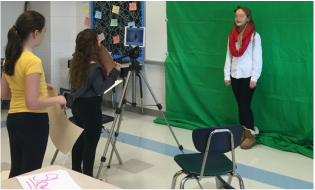
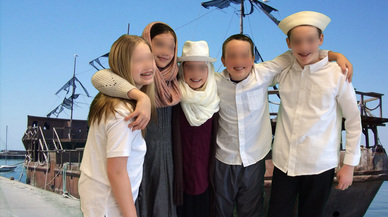
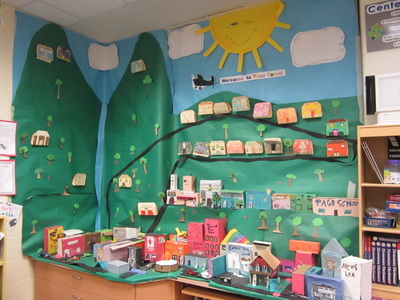
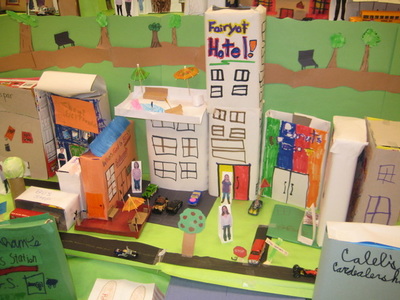
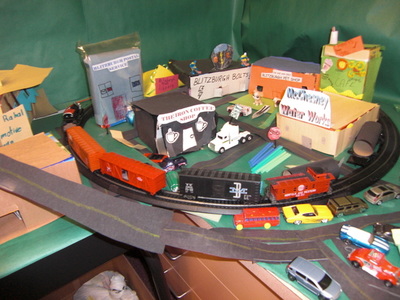
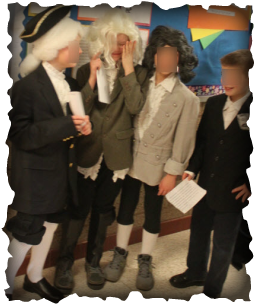


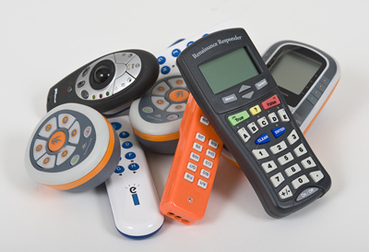
 RSS Feed
RSS Feed